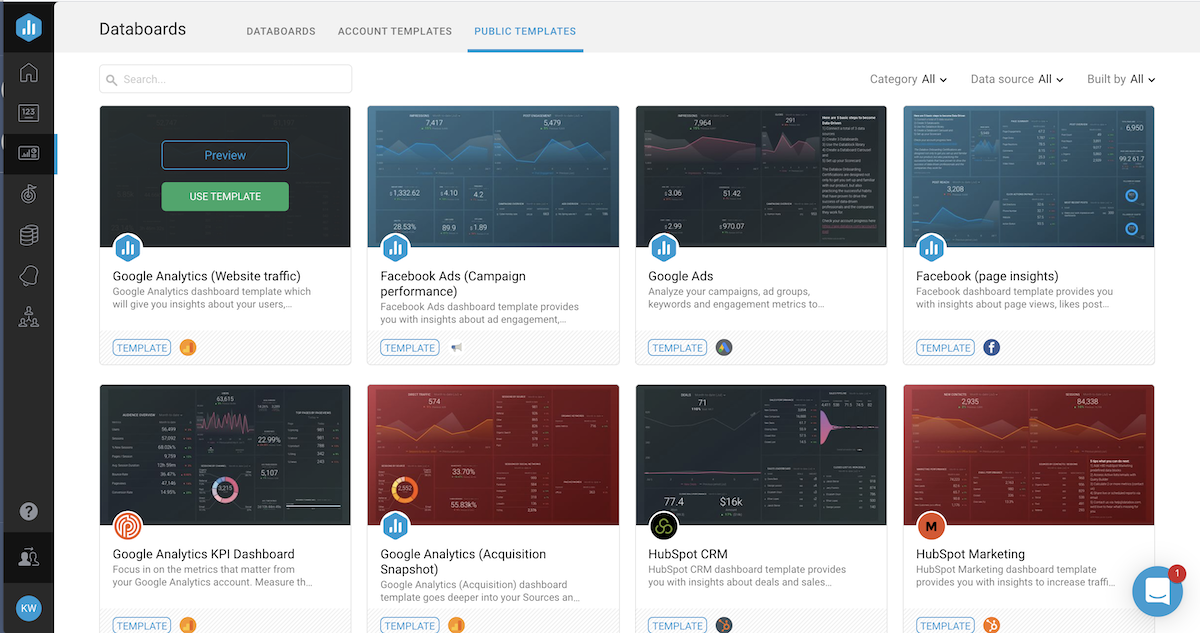


When you’re leading a complex business like manufacturing, the number of metaphorical plates you’re spinning all at once can be daunting. And when it’s time to run reports about what’s on those plates and how it’s helping achieve business goals, the available metrics and tools you can use seem endless — especially for inbound marketers.
The availability of data in inbound is a double-edged sword — marketers have access to literally thousands of data points at any given time. But how do you determine which to report on to actually drive strategy and productive conversations with all your company’s stakeholders? Before you fully conduct your inbound marketing analytics, it's important to first get a handle on what exactly you need to be reporting — and why.
Ask yourself a few questions to get a better handle on what reports are needed, who will be using them to drive business decisions, and what they say about the results you’ve achieved with your resources.
To begin, take a look at our suggestions for 4 steps to determine your inbound reporting needs.
Each quarter, a marketing manager should go through a checklist of key questions to find which inbound analytics are going to matter before creating reports for themselves or any other stakeholders.
Effective communication always takes the audience into account, and the same goes for effective reporting. The type of data a marketing manager needs to drive strategy and improve results will be more granular than the data the C-suite needs (and wants) to see.
Keep in mind who you’ll be sharing your report with and tailor it to them. What is their preferred style? How do they want to be presented with this information? Do they have a specific cadence or format to abide by? Marketing is all about storytelling, so make sure your story is relevant to your audience.
Match your reporting with what your stakeholders are already accustomed to whenever possible. Maybe your CEO prefers an executive summary rather than a deep dive of data details. Perhaps your CMO wants to see positive or negative trends over the reported time period instead of specific points in time. Do you have another stakeholder who only wants visuals? Prepare yourself and make it easy for your audience to comprehend.
Don’t waste your or your stakeholders’ time with irrelevant metrics. No one wants to see mounds of vanity metrics — something that looks good on the surface but doesn’t actually help you make business decisions. You need metrics that matter.
Starting with the foundation of your annual or quarterly business goals, work up from that while developing your inbound marketing strategy and reporting structure. This will color your reports with relevancy and make everything click when communicating marketing’s role in achieving company goals.
For example, say your company needs 20 new customers this year to hit your revenue goal. To assist with that, marketing needs to make sure the website is generating enough quality leads. And just like that, you now have a goal and a reporting metric that go together like peanut butter and chocolate (or brandy and egg nog — I mean, it’s Christmas time and we’re in Wisconsin, alright?).
Learn more: How to Set Annual and Quarterly Inbound Marketing KPIs Based on Business Goals
How long have you been practicing the inbound marketing methodology? That amount of time will directly affect what you’ll be able to gather and report.
What content has been published so far — blogs, landing pages, webpages, advanced content offers, email campaigns, etc. — that will be available to report on? If you’ve yet to publish blogs or landing pages, you won’t have a reliable baseline for traffic and lead conversions to use for goal setting.
You also need to have defined your SEO strategy. What relevant keywords are you targeting with your content? If you haven’t figured that out yet, start there before jumping into the metrics with a hodgepodge of keywords that might not even be appropriate for your strategy. You need to know which keywords will matter so you can understand relevant keyword position shifts.
On the other hand, if you’ve been practicing inbound for some time, you should have some high-quality data to use to create benchmarks and set up goals for growth, which will then inform what needs reporting.
For example, if you see that your landing page conversion rate fell significantly last quarter, you can review and evaluate your keyword and form strategies and measure the effects those changes have on conversion.
Get Your Free Copy: Key Performance Indicators for Inbound Marketing
To paraphrase the old adage, don’t throw every tool at the wall and see what sticks. You need to find which tools will make sense for what metrics you’ll be reporting and what fits best with your budget.
A report is only as powerful as the information found on it. Don’t use a fancy tool at a premium cost that offers stunning visuals but doesn’t actually tell you what you need to know. Figure out which platforms you’ll need to use and become familiar with in order to accurately find and report on your specific metrics.
Some of our favorites:
Databox is a particularly effective tool because it streamlines your reporting by bringing together data from multiple platforms into visual dashboards. The dashboards can indicate whether the data is trending up or down, putting key information in a clear display that’s always available in real-time.

How you’ll present your findings is the last piece of the puzzle needed to fit this all together with your marketing strategy. Once you have all these questions answered, you’ll be on your way to developing meaningful reports, which show results that gauge how you’re doing.
WATCH: 3 Inbound Marketing Analytics Tools You Need [Video]
Bottom line: It’s all about decluttering and focusing on metrics that are relevant to your goals. Then, format your reports in way that tells the story it all fit together! Don’t get lured in by metrics that look good but don’t tell you how you’re truly performing. Demonstrate to your CEO or CFO why these metrics matter and what they show about your marketing efforts.
In addition to showing the health of your inbound marketing strategy, there’s another reason reporting on the right metrics is critical: proving the ROI. The top-level leadership team wants to know what’s happening with the money they’re putting into the marketing. Is high blog traffic translating to conversions? Are people downloading your gated content and becoming new customers? Your leaders want to know that the marketing budget is money well spent.
We have you covered! We’ve created a helpful guide to show you the steps to determine how much credit marketing should receive for customer acquisitions, the number of customers influenced by your marketing efforts, and more. Click the link below to get your copy of our guide to making your case using data that executives care about today!
